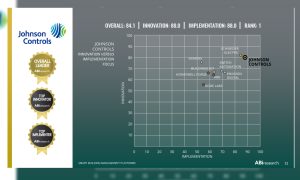The duct air quality sensors market is set to expand, with smart building solutions and indoor air quality awareness propelling growth.
The duct air quality sensors market size is expected to grow by USD 84.54 million between 2022 and 2027. However, the growth momentum of the market will progress at a CAGR of 5.89% during the forecast period. The market is segmented by End-user (Non-residential and Residential), Type (Multi-gas monitor and Single-gas monitor), and Geography (North America, Europe, APAC, Middle East and Africa, and South America).
The growing awareness of indoor air quality drives the duct air quality sensors market. People learn about the harmful effects of indoor pollutants, and thus, it is increasingly recognized that indoor air can be more polluted than outdoor air. This leads to inadequate ventilation, construction materials, and indoor activities. Furthermore, the awareness is spreading to residential, commercial, and industrial areas, which is driving the demand for effective IAQ solutions. Hence, such factors drive the growth of the duct air quality sensors market during the forecast period.
Key Highlights:
- Some of the key players in the duct air quality sensors market: Airflow Developments Ltd., AMETEK Inc., Amphenol Corp., BELIMO Holding AG, Building Automation Products Inc., CAREL INDUSTRIES S.p.A., EC Products Ltd., Fr. Sauter AG, FuehlerSysteme eNET International GmbH, Gas Sensing Solutions Ltd., Greystone Energy Systems Inc., Honeywell International Inc., Johnson Controls International Plc, S and S Regeltechnik GmbH, Schneider Electric SE, Siemens AG, Sontay Ltd., Testo SE and Co. KGaA, Thermokon Sensortechnik GmbH, Tongdy Sensing Technology Corp., Vaisala Oyj, WIKA Alexander Wiegand SE and Co. KG, and Andivi d.o.o.
- Duct Air Quality Sensors Market is fragmented in nature.
- Market to observe 5.67% YOY growth in 2023.
Trend
- The increasing adoption of smart building solutions is an emerging duct air quality sensors market trend.
- A combination of sensors, data analytics, automation, and connectivity systems is used by smart building solutions in order to create a responsive smart building environment.
- These solutions integrate sensors with building management systems and IoT platforms, which enables real-time monitoring of indoor air quality parameters such as pollutants, temperature, humidity, and ventilation rate.
- Hence, such trends fuel the growth of the duct air quality sensors market during the forecast period.
Challenges
- The complexity of air quality assessment challenges the growth of the duct air quality sensors market.
- A multitude of dynamic factors affect the indoor air quality. These factors include various pollutants, temperature, humidity, ventilation rates, and occupant activities.
Keg Segments:
The non-residential segment is significant during the forecast period. A wide range of economic sectors, industries, educational institutions, and public spaces are covered in this segment. These spaces are most heavily affected by the performance of ambient air quality; the non-residential segment plays a pivotal role in the global adoption of duct air quality sensors.
For further read, refer https://www.prnewswire.com/news-releases
Cookie Consent
We use cookies to personalize your experience. By continuing to visit this website you agree to our Terms & Conditions, Privacy Policy and Cookie Policy.














